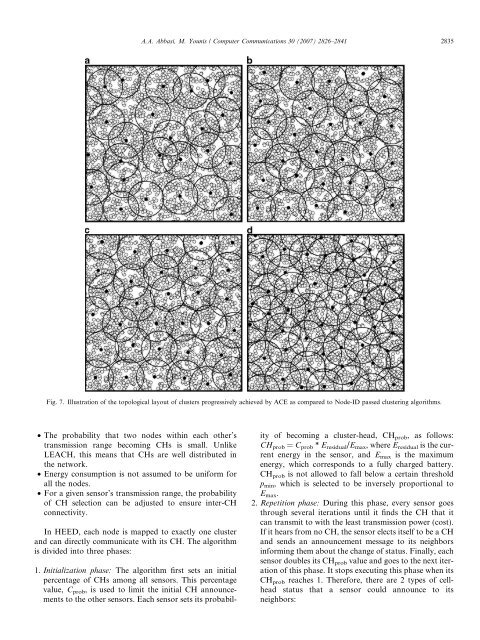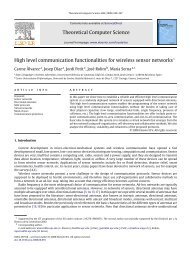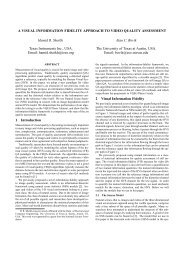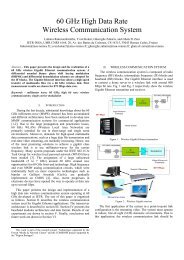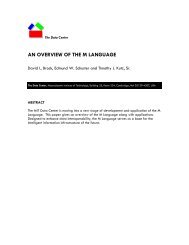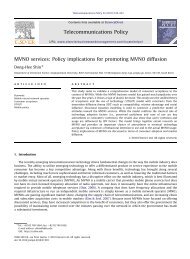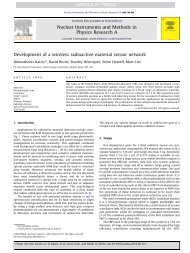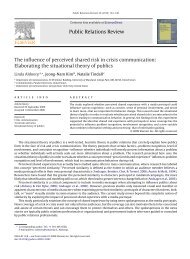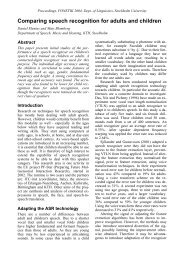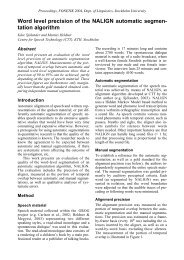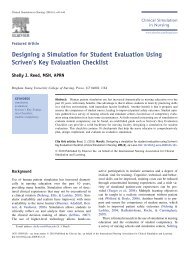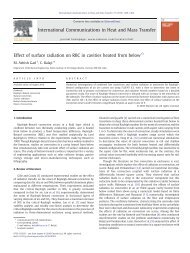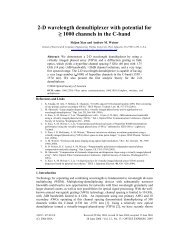A survey on clustering algorithms for wireless sensor networks
A survey on clustering algorithms for wireless sensor networks
A survey on clustering algorithms for wireless sensor networks
You also want an ePaper? Increase the reach of your titles
YUMPU automatically turns print PDFs into web optimized ePapers that Google loves.
• The probability that two nodes within each other’s<br />
transmissi<strong>on</strong> range becoming CHs is small. Unlike<br />
LEACH, this means that CHs are well distributed in<br />
the network.<br />
• Energy c<strong>on</strong>sumpti<strong>on</strong> is not assumed to be uni<strong>for</strong>m <strong>for</strong><br />
all the nodes.<br />
• For a given <strong>sensor</strong>’s transmissi<strong>on</strong> range, the probability<br />
of CH selecti<strong>on</strong> can be adjusted to ensure inter-CH<br />
c<strong>on</strong>nectivity.<br />
In HEED, each node is mapped to exactly <strong>on</strong>e cluster<br />
and can directly communicate with its CH. The algorithm<br />
is divided into three phases:<br />
1. Initializati<strong>on</strong> phase: The algorithm first sets an initial<br />
percentage of CHs am<strong>on</strong>g all <strong>sensor</strong>s. This percentage<br />
value, C prob, is used to limit the initial CH announcements<br />
to the other <strong>sensor</strong>s. Each <strong>sensor</strong> sets its probabil-<br />
A.A. Abbasi, M. Younis / Computer Communicati<strong>on</strong>s 30 (2007) 2826–2841 2835<br />
Fig. 7. Illustrati<strong>on</strong> of the topological layout of clusters progressively achieved by ACE as compared to Node-ID passed <strong>clustering</strong> <strong>algorithms</strong>.<br />
ity of becoming a cluster-head, CH prob, as follows:<br />
CH prob = C prob * E residual/E max, where E residual is the current<br />
energy in the <strong>sensor</strong>, and Emax is the maximum<br />
energy, which corresp<strong>on</strong>ds to a fully charged battery.<br />
CHprob is not allowed to fall below a certain threshold<br />
pmin, which is selected to be inversely proporti<strong>on</strong>al to<br />
Emax.<br />
2. Repetiti<strong>on</strong> phase: During this phase, every <strong>sensor</strong> goes<br />
through several iterati<strong>on</strong>s until it finds the CH that it<br />
can transmit to with the least transmissi<strong>on</strong> power (cost).<br />
If it hears from no CH, the <strong>sensor</strong> elects itself to be a CH<br />
and sends an announcement message to its neighbors<br />
in<strong>for</strong>ming them about the change of status. Finally, each<br />
<strong>sensor</strong> doubles its CHprob value and goes to the next iterati<strong>on</strong><br />
of this phase. It stops executing this phase when its<br />
CHprob reaches 1. There<strong>for</strong>e, there are 2 types of cellhead<br />
status that a <strong>sensor</strong> could announce to its<br />
neighbors:


